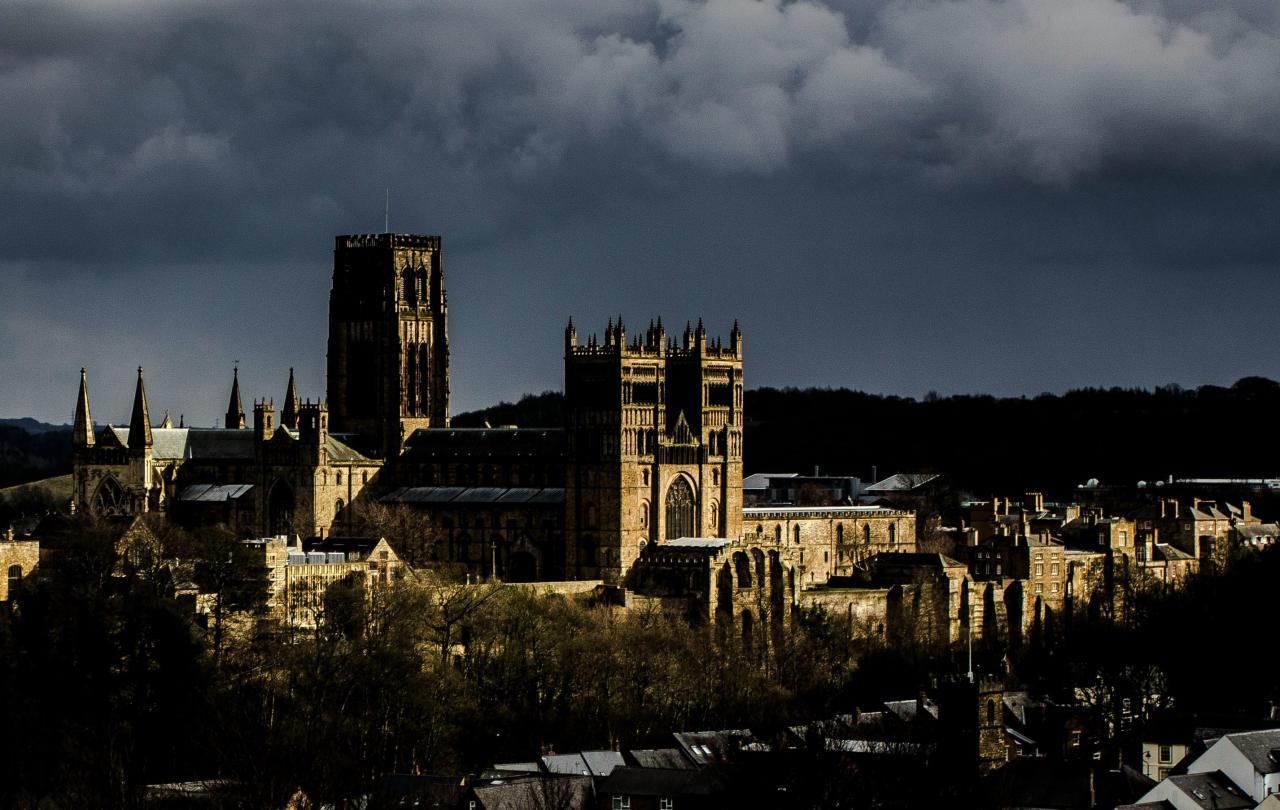
2025 has so far been the year of the north. At its start, we were treated to the plasticine escapades of Wallace and Gromit, whose unabashed northern-ness was enough to faze American TV executives. Then in April, the story turned to northern industrial decline when Scunthorpe steelworks hit the headlines, prompting last-minute state intervention. In May, the local elections saw the astonishing rise of Reform across areas previously dominated by Labour. Taken together, these three moments encapsulate the range of associations often evoked by life on the periphery of England: regional pride, good-natured humour, close communities, economic precarity and hard graft.
The north is a landscape of contraries and co-existence, where sweeping fells and dark skies meet red-brick chimneys and rolling waves of terraced houses. As David Barnett puts it, it is “a place made up of individuals, bound by an ethereal quality that is at once a myth and, conversely, as real as grit and graft.’
Hard to pin down, yet real once seen, the same could also be said for the faith that has filled the region with a multitude of expressions to this day.
Of course, when we talk about ‘the north’, we mean everything and everyone from the conurbations of Merseyside and Greater Manchester to the Lake District and Northumberland, where centuries of border warfare have left a plethora of castles and fortified houses (‘pele towers’). Two landscapes dominated by buildings which have long lost their original purposes. Perhaps the principal shared characteristic of these communities is a sense of distance from mainstream political and cultural life (just try catching a train that isn’t heading to London). But with distance comes an independence of identity and a proud sense of cultural distinctiveness. If anything, the only thing that can be definitively said about northern identity is that it is the quality of being ‘not southern’.
Northern Christianity has not escaped this wavering relationship with the south. In 664 AD, the Northumbrian Church gathered at Whitby for a meeting presided over by King Oswy of Northumbria and the Abbess Hilda of Whitby. It was quite literally a pivotal moment for the early Church and the north more widely. The matter at hand was whether Northumbrian Christianity, then centred on the Holy Island of Lindisfarne, should remain orientated towards Celtic Christianity, which had as its principal focal point the abbey of Iona, or whether to turn towards Rome and its growing mission in the south, headquartered in Canterbury. North or south? Canterbury or Iona?
In the end, the group opted for closer links with the Roman Church. Yet the Christian faith in the north remained distinctive, blending the older influences of St Columba and St Aidan with the new ones coming up from the south. Lindisfarne Priory remained a centre for Christian life in the north and its prestige led it to accumulate the wealth that eventually precipitated its own destruction by Viking raids in 793 AD. In spite of this, the northern saints drew reverent pilgrims for centuries to come, as the grandeur and scale of Durham Cathedral, the burial place of St Cuthbert, testifies to this day.
Behind the independent northern spirit lies a long history of political, economic and spiritual divergence from the south. Northern spirituality is characterised by a sustained distinctive flowering of the Christian faith that intertwines itself with the social identity of the peoples and places of the north. The region’s response to the religious reforms of Henry VIII was the Pilgrimage of Grace, which protested both his break from the Roman Catholic Church and socio-economic policies implemented by the king and his chief minister, Thomas Cromwell.
By the seventeenth century, faith in the north had taken on a distinctly reformist hue as non-conformism – that is, churches and sects not aligned with the Church of England, the Church of the state and the establishment – flourished in the region. The beginnings of the Quaker movement can be traced to an open-air sermon given by the reformer George Fox in 1652 on Firbank Fell, near Sedburgh in modern Cumbria - the crag he spoke from is still known as Fox’s pulpit - while other reformist movements, including Methodism, Congregationalism and Presbyterians, also drew increasing crowds with their passionate preaching in fields, moors and disparate farming communities.
The very landscape of northern England, often challenging and remote, drew its inhabitants away from both socio-political centres and the established Church, nurturing forms of belief in the seventeenth and eighteenth centuries which were as independent as those of seventh- and eighth-century Northumbria. Much of religious life in the region was organised around a large parish church that served numerous small communities spread across a large area. Living at such distances, no wonder people felt a disconnect from the parish church and the national Church it represented. Non-conformist chapels and meeting houses quickly spread across the landscape, particularly in remote villages outside of the control of major landowners and Church authorities. As David Petts argues, the building of chapels expressed the collective economic and organisational independence of rural labourers and miners, and united dispersed communities through collective endeavour.
The region has proved itself capable of delivering considerable shocks to the London political establishment.
Once the chapel was built, they would prove valuable training grounds for rethinking the political organisation of the poor; the significance of non-conformism thus lay not only in its spiritual divergence from the establishment, but also in its fostering of alternative political systems. Methodism in particular was to provide an ideological and practical template for mass movements such as Chartism, which campaigned for social reform and an expansion of democratic suffrage in the mid-nineteenth century. Chartist campaigners called themselves ‘missionaries’ and crisscrossed the country preaching ‘the gospel of Chartism’ and forming Chartist congregations. Their political vision found a receptive audience in the working population of the industrialised north, who were raised on the non-conformist emphasis on Christ as the carpenter’s son and a poor man, one who worked for his living as they did. Towards the end of the nineteenth century, the non-conformist social Gospel produced notable reformers such as the journalist W. T. Stead, born in rural Northumberland as the son of a Congregationalist minister, and the Quaker confectioner Joseph Rowntree of York.
Amidst the darkness, grime and crushing conditions of nineteenth-century mills and mines, the Christian message of mutual aid and fellowship, first articulated by the early Church, again found expression. In Manchester, the Methodist Central Hall served a dual purpose, providing a space for worship on Sundays and a community space during the week, when it offered libraries, food, clothing, shelter, childcare and even entertainment to the people of the city.
Social reform and the Christian faith buttressed one another across the region and together resisted the fractures, pressures and degradations that industrialisation exerted on the communities they served. The social values of these interdependent movements left a lasting impact on the modern political landscape of the region, until recently known as Labour’s ‘Red Wall’. As any political correspondent will tell you, northern politics can no longer be taken for granted and the region has proved itself capable of delivering considerable shocks to the London political establishment. Walking through these communities, left behind by deindustrialisation, globalisation and our periodic post-crisis recoveries, the air seems pervaded by a sense of unravelling as the old bonds and certainties slowly slip-away. The Church is not immune to these processes and the north follows the overall national trend of declining church attendance. The empty chapels testify as much to the seismic shifts taking place in the region as the empty warehouses and factories.
But if the history of Christianity in the north tells us anything, then it is that northern spirituality has never stood still. It has an ingenious capacity to adapt, to regenerate itself to meet the challenges faced by each generation. The challenges are varied and specific to each community, but the Church is there. In Burnley, the fight of the early disciples against urban poverty is echoed in the work of the Church on the Street, whilst on Holy Island itself, the Parish Church of St Mary the Virgin is a driving force behind the Holy Island 2050 project, which aims to assure the sustainability of the Island community in the face of depopulation and rural precarity.
If the dominant atmosphere in the north is one of feeling left behind, then the Christian call to reach out to those around us is needed more than ever. More than one thousand years separate St Aidan from us, but the Christian faith can still help the us to navigate the challenges and precarities of a changing world.
Support Seen & Unseen
Since Spring 2023, our readers have enjoyed over 1,000 articles. All for free.
This is made possible through the generosity of our amazing community of supporters.
If you enjoy Seen & Unseen, would you consider making a gift towards our work?
Do so by joining Behind The Seen. Alongside other benefits, you’ll receive an extra fortnightly email from me sharing my reading and reflections on the ideas that are shaping our times.
Graham Tomlin
Editor-in-Chief





